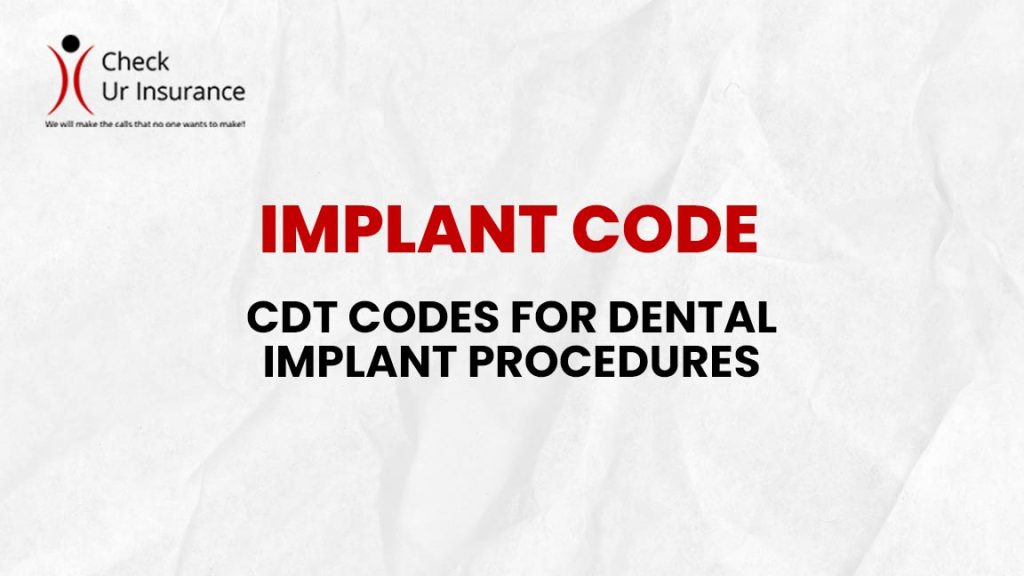CDT Codes For Dental Implant Procedures: Implant Codes
Dental implant procedures requires a comprehensive understanding of the corresponding Current Dental Terminology (CDT) Implant codes. These dental codes for implants serve as a crucial guide for both practitioners and patients alike, shedding light on the intricacies of each step involved in the transformative process of implant placement.

Table of Contents
Dental Procedures Implant Code
D6190: Radiographic/Surgical Implant Index
Dental code D6190 encapsulates the intricate art of surgical indexing, a meticulous process aimed at documenting the precise position of implants in relation to adjacent teeth. The surgeon employs this information to craft articulated models and dies, facilitating the fabrication of abutments with utmost precision.
D6010: Surgical Placement of Implant Body
D6010 dental code encompasses a multifaceted procedure, encompassing the surgical placement of the implant body, the second-stage surgery, and the strategic placement of the healing cap. The completion of D6010 is contingent upon the implant achieving stability and readiness for loading.
D6011: Second Stage Implant Surgery
As a distinct code, D6011 is dedicated to the second stage of implant surgery, marking a pivotal phase in the overall process.
D6012: Surgical Placement of Interim Implant Body for Transitional Prosthesis (Endosteal Implant)
This code highlights the surgical placement of an interim implant body designed for a transitional prosthesis, specifically focusing on endosteal implants.
D6040: Surgical Placement (Eposteal Implant)
For those opting for eposteal implants, D6040 dental code steps into the spotlight. This code denotes the surgical placement procedure for this particular type of implant.
D6050: Surgical Placement (Transosteal Implant)
Exclusive to the lower jaw, D6050 signifies the surgical placement of transosteal implants. These implants feature a unique U-shaped metal frame or pins, strategically inserted through the alveolar socket and bone.
In essence, the utilization of these CDT codes not only streamlines communication within the dental community but also empowers patients with a deeper understanding of the nuances associated with each phase of the implantation journey. As practitioners navigate the landscape of dental procedures, these codes stand as beacons of clarity, ensuring that every step is meticulously documented and understood by all stakeholders involved.
Did you like this article? Read more helpful latest blogs
